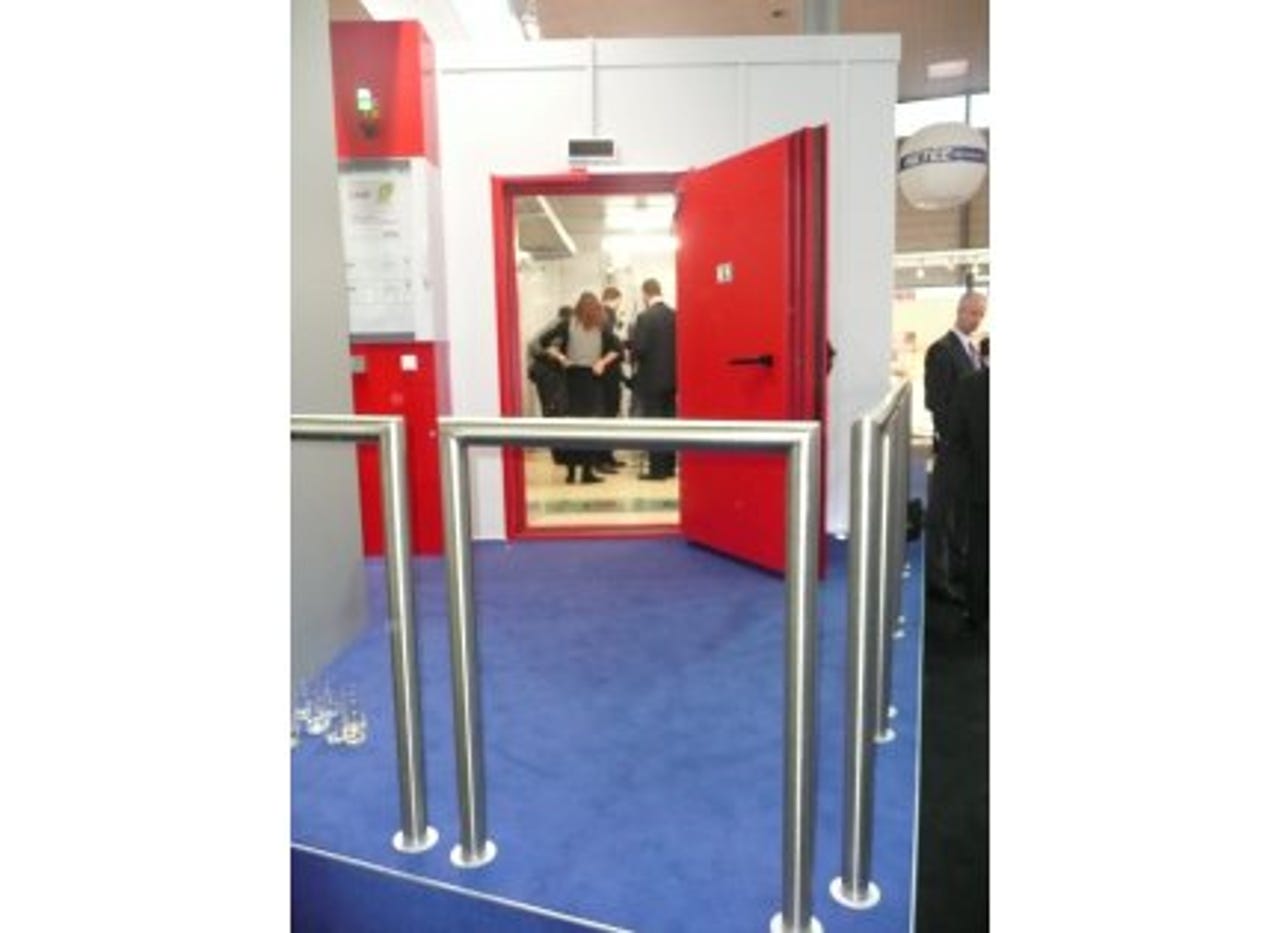Photos: Inside the recycled data center


Constructed entirely of recycled materials, the Rittal data center is designed to withstand fire, water and gas corrosion. The walls are sheets of flame-retardant treated metal that separate two layers of insulation. The outer layer is gypsum and silica impregnated with a "secret blend" of chemicals, and is designed to hold water. The inner layer absorbs and blocks heat, and is plastic combined with chemicals. The door is quadruple-insulated with the same materials plus a ceramic layer, while the door-frame is lined with a sealant which expands with heat and hermetically seals the data center in the event of fire, to prevent smoke-damage to equipment.
The heat-retardant qualities of the materials were tested at the Brunswick Institute, where a three-meter cubed block was heated for one hour in a large oven at 1,090°C, then left in the furnace for 24 hours. Conditions inside the cube were monitored, and to gain accreditation could not exceed 70°C, go above 85 percent humidity, or admit any smoke or gas. The door also has sensors that detect drilling and automatically bolt themselves shut.
Cable protection is adapted from shipbuilding techniques, Lampertz vice director for international sales Thomas Meier explains. If water penetrates one section of cabling, other sections can be sealed. The cabling is surrounded by materials that are heat, fire and gas resistant. Additional flame-retardant material is packed inside the cabling ducts.
This picture, looking down through a glass cutaway, shows the water-supply pipes for part of the cooling system. In the top right-hand corner of the picture is the cage for a fan that circulates conditioned air under the floor. Outside air can be filtered to extract dust and particles and mixed with air-conditioned air inside, but the data-center unit is usually sealed, and air inside filtered and recirculated.
The server racks are sealed inside an air-conditioned and water-cooled cabinet. Blade servers have a 15- to 20-kilowatt heat load per rack, but operating at this temperature can reduce the lifespan of the equipment. Using Rittal-developed proprietary freeware, IT professionals can monitor the server heat loads, plus the energy efficiency of the array.
The water pumping system is connected to the pipes running under the floor to the water-cooling systems in the sealed server cabinets. Air conditioning by itself can't cool the servers efficiently.
The monitoring system allows for remote management of the data center. A closed-circuit camera monitors the center, which can be viewed remotely. Software can monitor all the systems including heat load, and send alerts if something is amiss. Information can be sent to someone's mobile via text or IP, and email messages can be sent to an IT helpdesk or third-party trouble-shooters.
This sensitive smoke detector contains a laser that can detect smoke particles passing through the beam. The mechanism sucks in air to test its quality. If any smoke is detected, the main alarm is sounded and fire-retardant gas is released through a nozzle fixed to the wall of the data center.
This canister contains fire-retardant gas called Novec 1230 in liquid form. When released, the synthetic fire-suppressing gas molecules bind with free radicals released in combustion, cutting the "fire chain". Meier claimed the gas was not harmful to humans, the data-center equipment, or the environment.